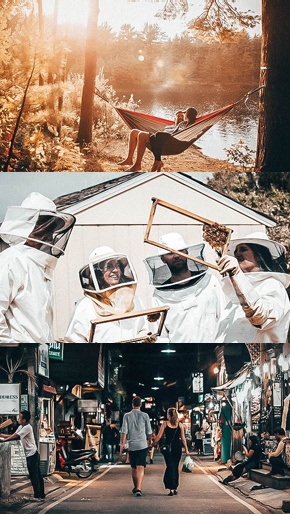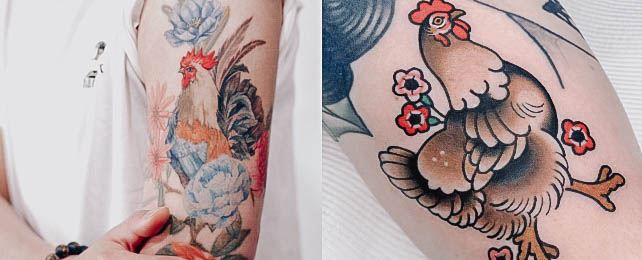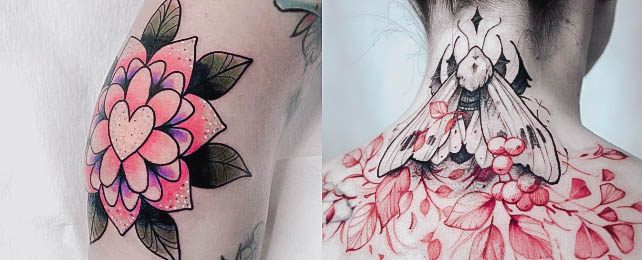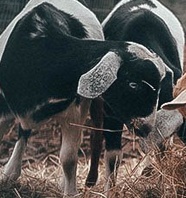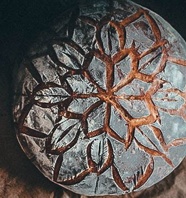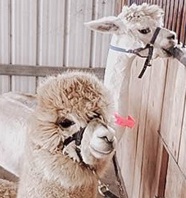Birds’ nest tattoos are one of the most graceful and intricate tattoos available to women.
These tattoos have a unique and pretty style to them, which is why they’re so popular among nature lovers.
These tattoos are great if you’re looking for a simple design reminiscent of nature and for girls who like birds; it’s also a great way to show off your love for the animal kingdom. You could even get this tattoo done in several different designs, so you can choose the one you like best!
These tattoos show appreciation for the environment’s beauty, which many people frequently overlook. Birds’ nest tattoos are also a good choice if you are interested in flowers; these designs often include patterns that resemble flowers.
Bird nest tattoos represent life, nature and beauty, and tranquility. This tattoo is also great because it represents freedom and the ability to do whatever you want. Birds are also known to represent love, which is another reason why this tattoo is great for girls. These tattoos show off your love for animals and nature, and they make great choices if you are interested in nature.
You can have one with birds’ eggs to represent the birth of life or even one with flowers or a bird’s nest. This tattoo represents purity, which is hard to come by these days. The designs of these tattoos are endless, which is why they’re great choices if you’re looking for something original and versatile.
Bird nest tattoo design idea inspiration:
Elements to give your bird’s nest a realistic vibe: 1. Twigs
2. Leaves
3. Grass
4. Moss
5. Pine needles
6. Feathers
7. Wool
8. Hair
9. Straw
10. Lichen
11. Bark
12. Bits of fabric
13. Down feathers
14. Cotton
15. Yarn
16. Dried grasses
17. Grasses
18. Mud
19. Pebbles
20. Pebbled sticks
21. Sticks
22. Animal fur
23. Animal feathers
24. Cloth pieces
25. Mossy stems
26. Plant fibers
27. Rope fibers
28. Horsehair
29. Nests made of mud or clay
30. Worm cocoons
31. Insect exoskeletons
32. Seeds and husks
33. Pieces of wood
34. Eggshells
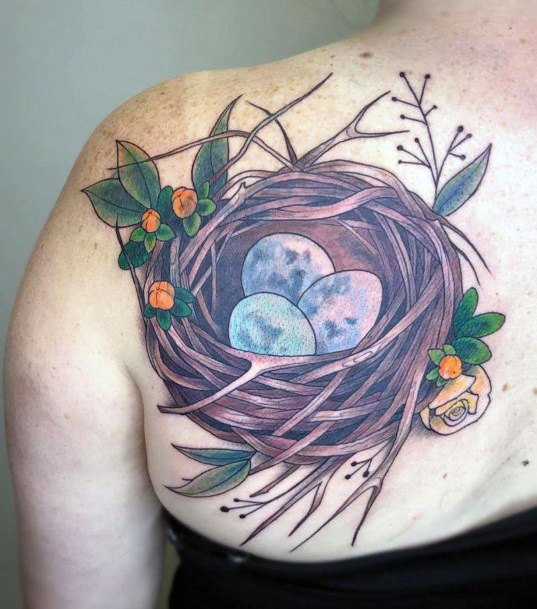
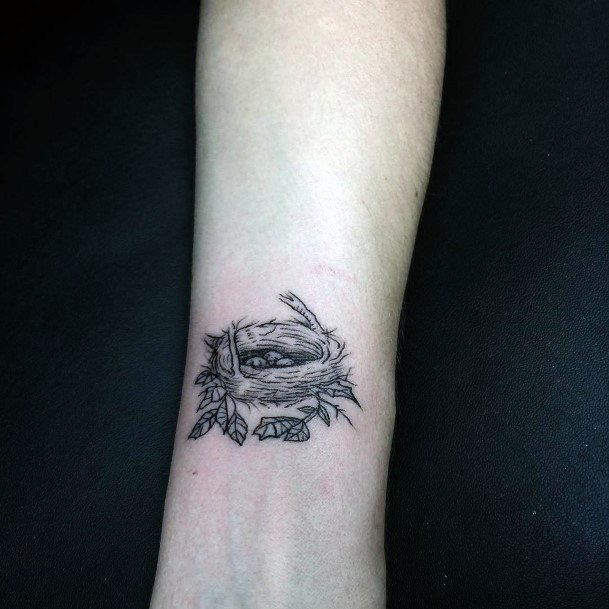

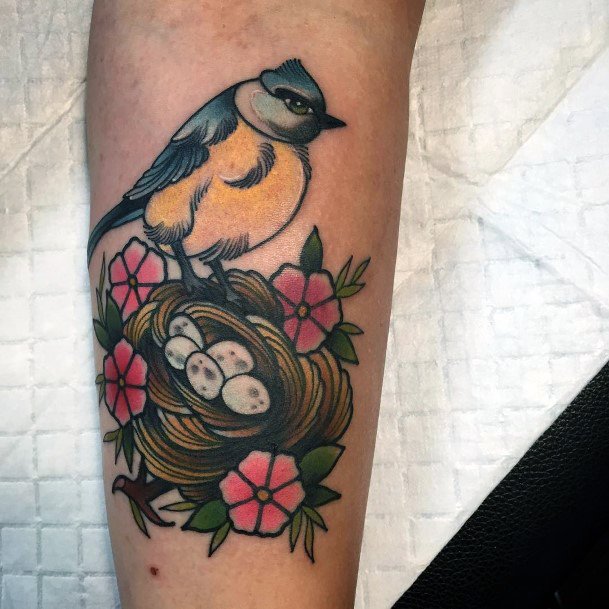
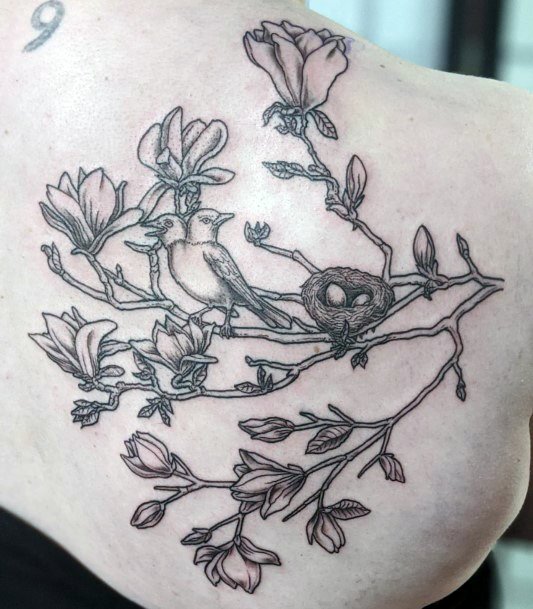
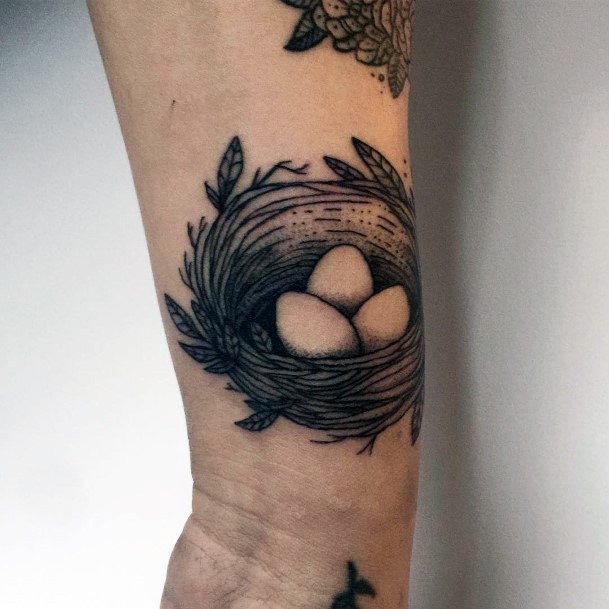


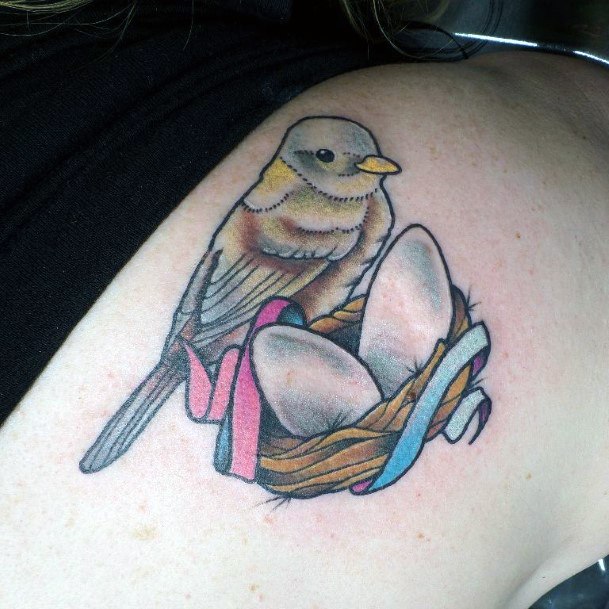
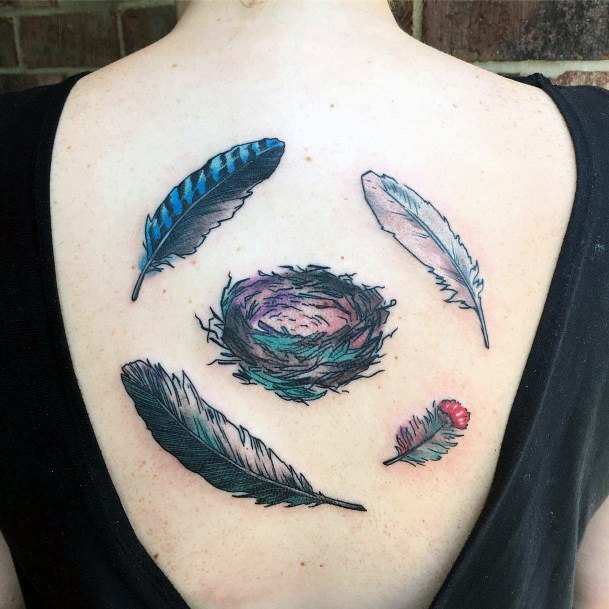


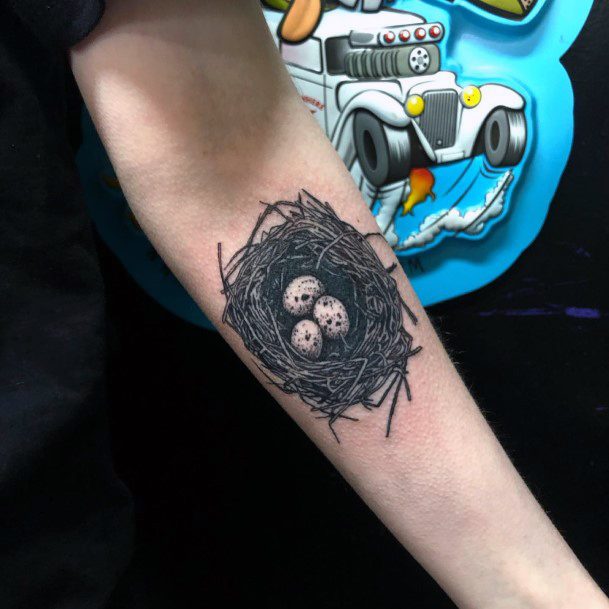
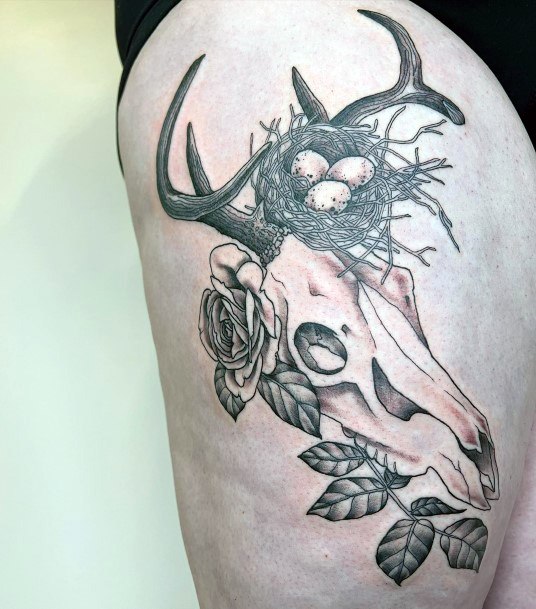
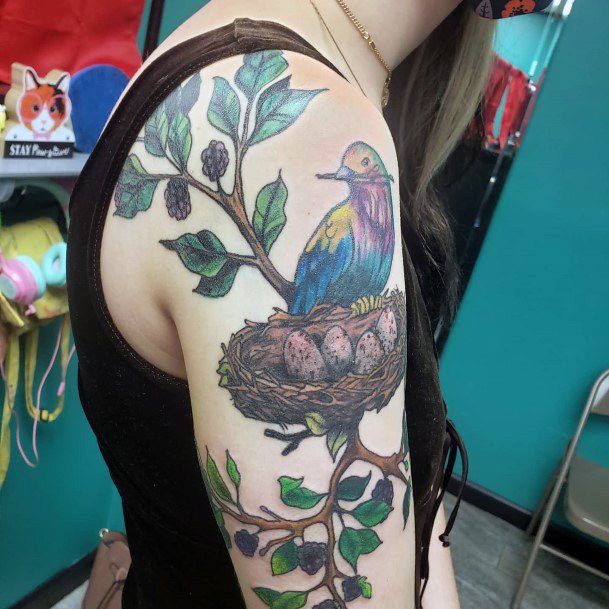
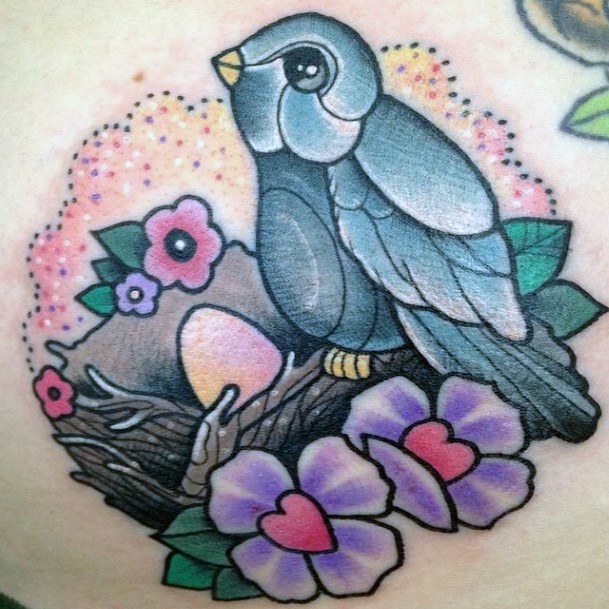



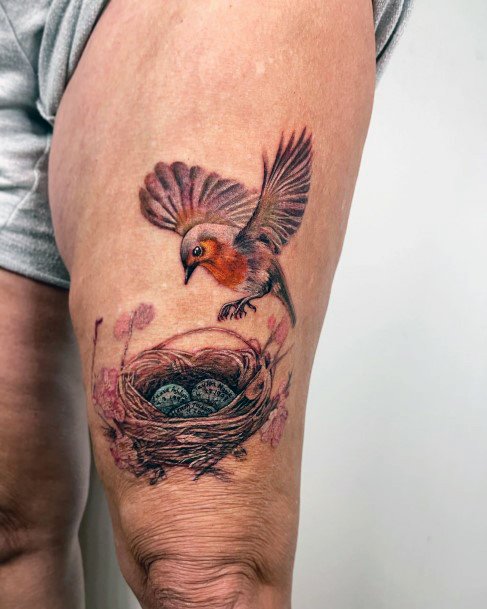
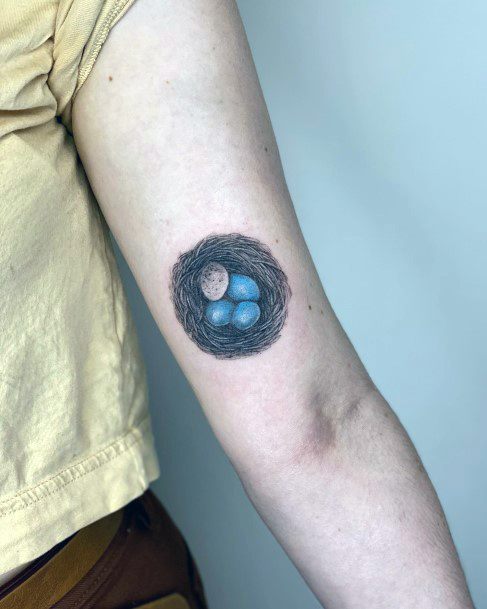
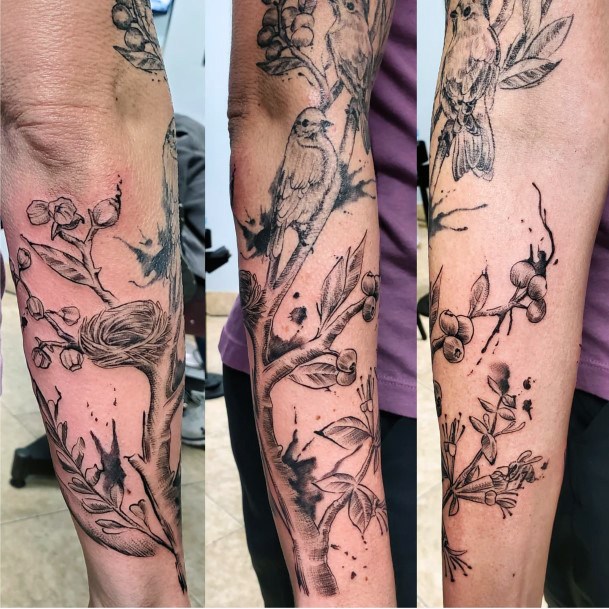


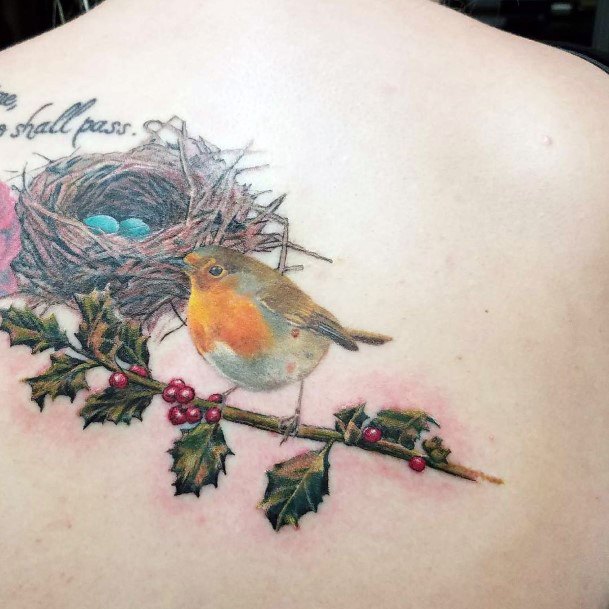


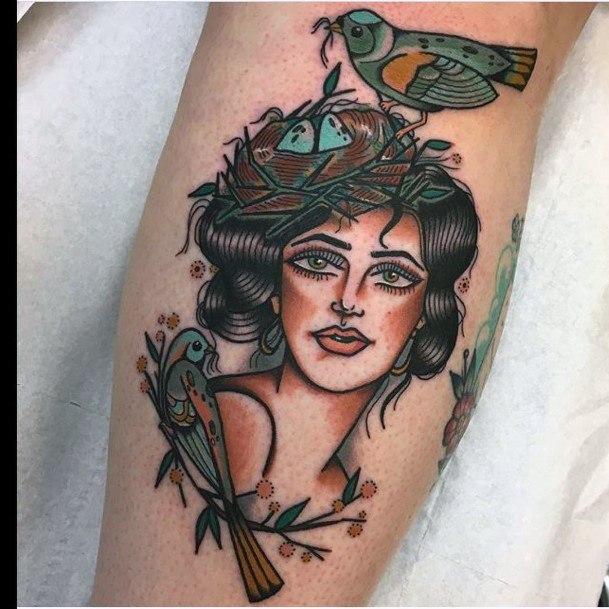
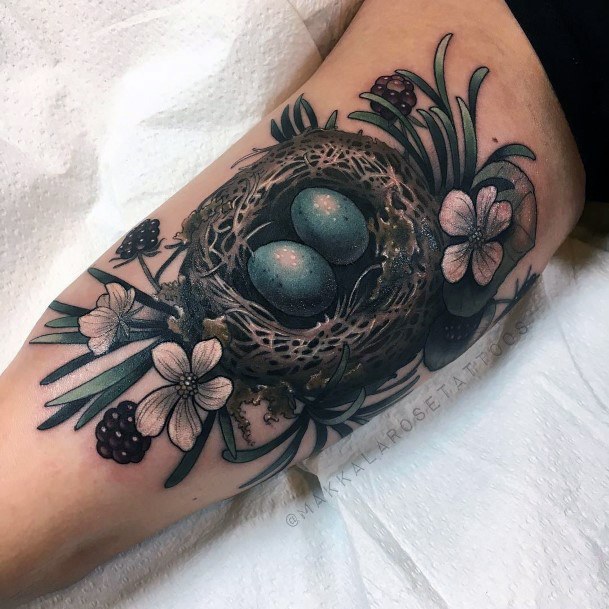
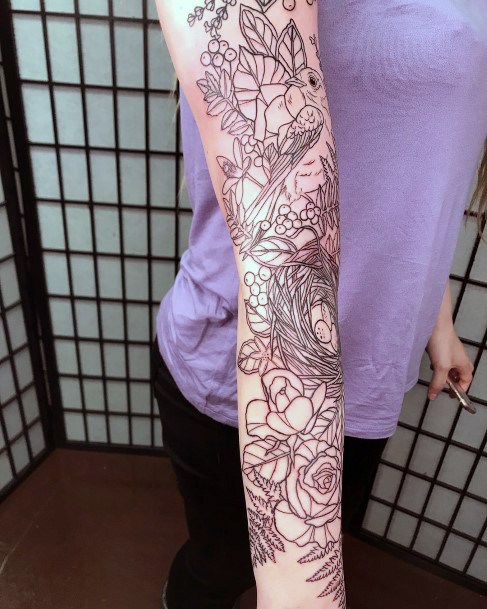

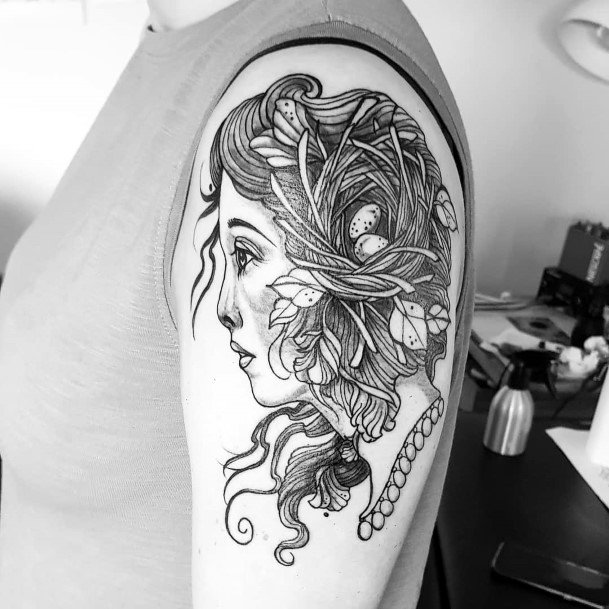
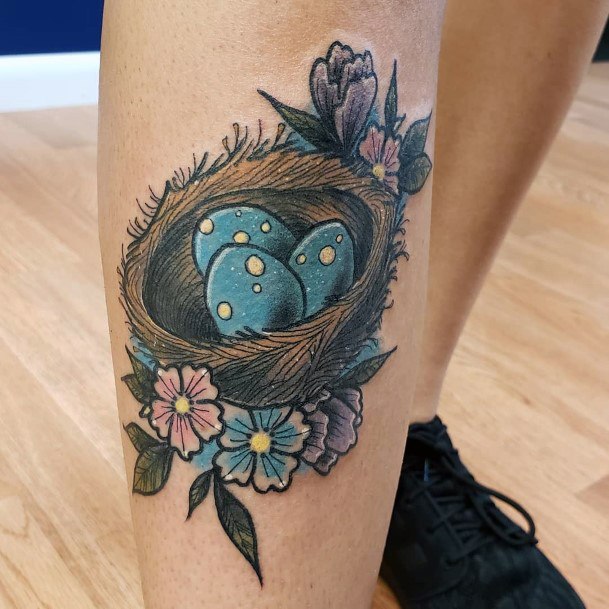
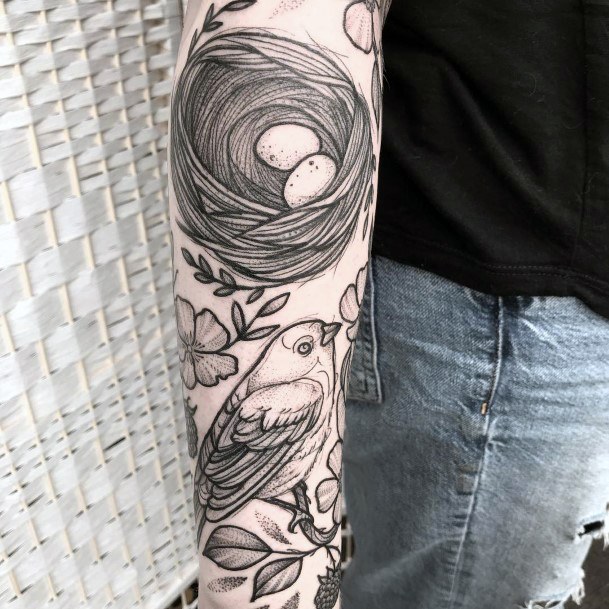
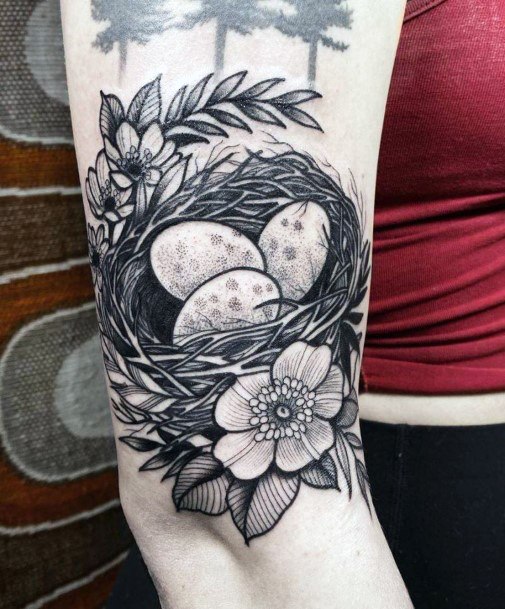
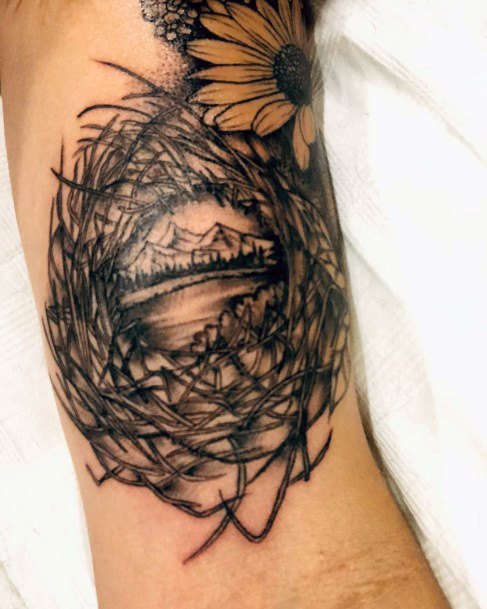



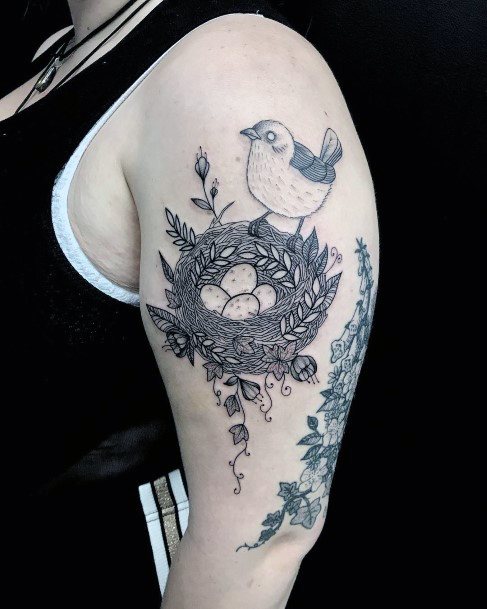
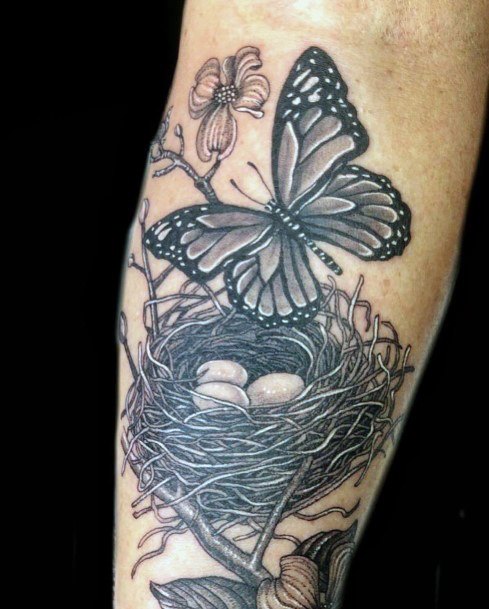
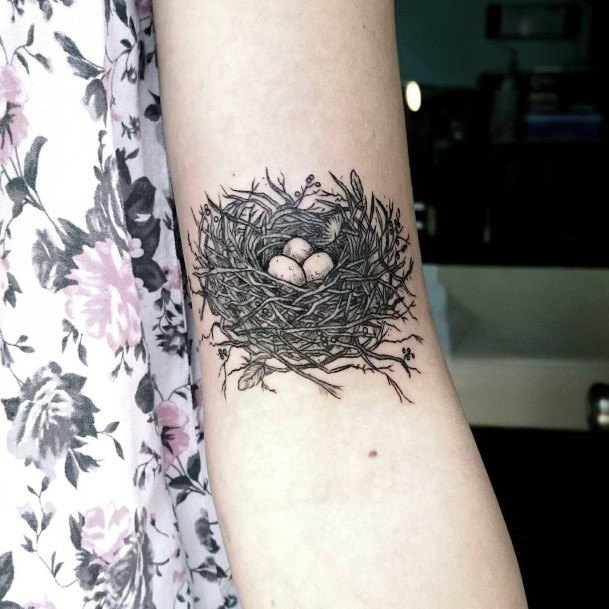
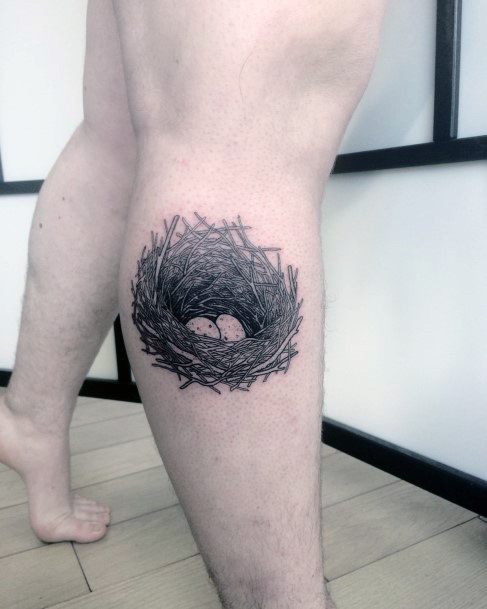
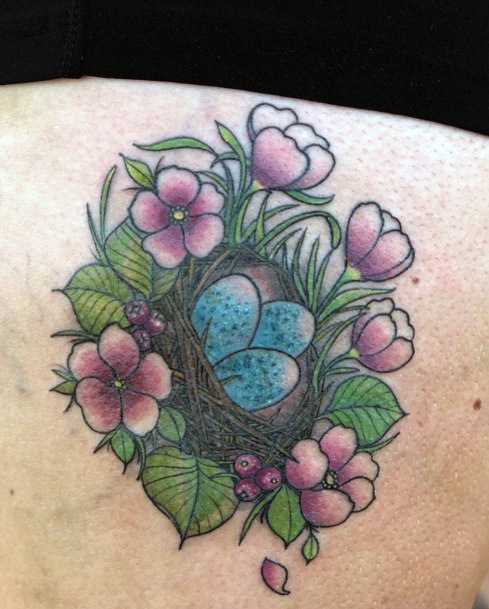
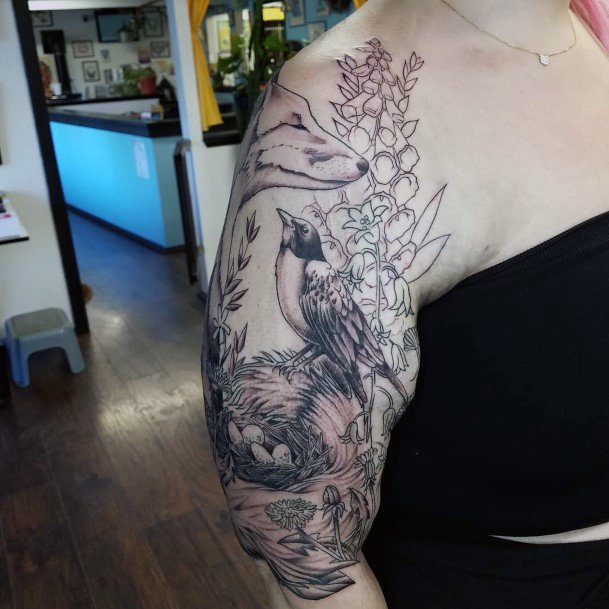
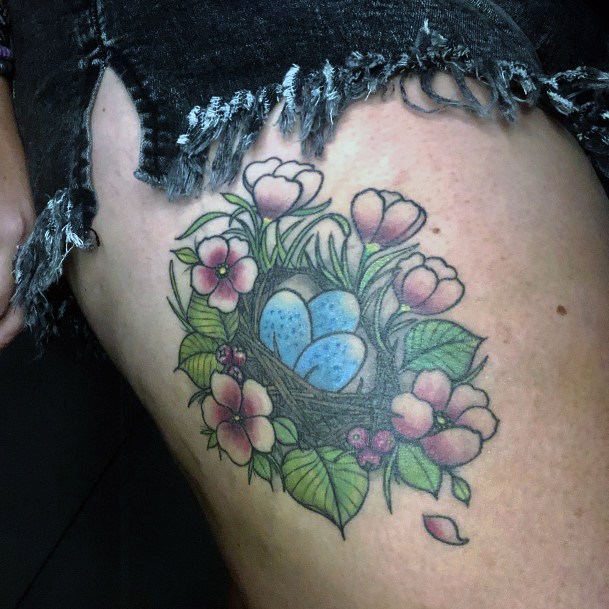


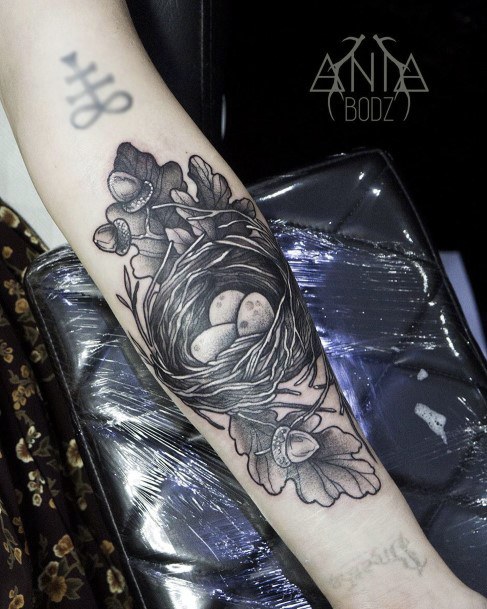

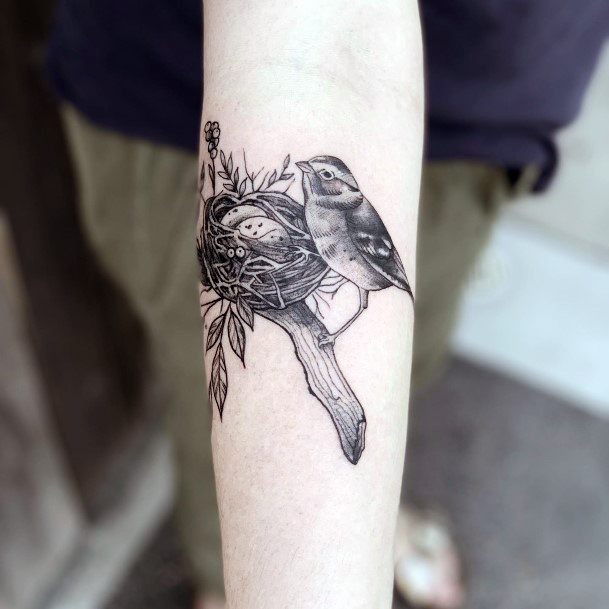

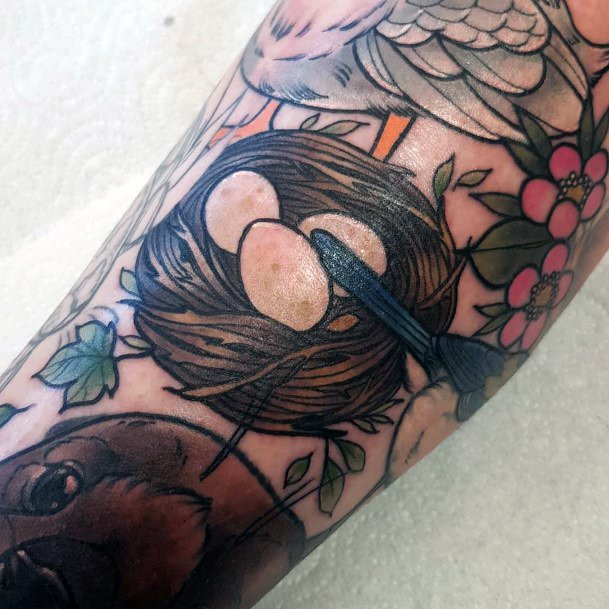
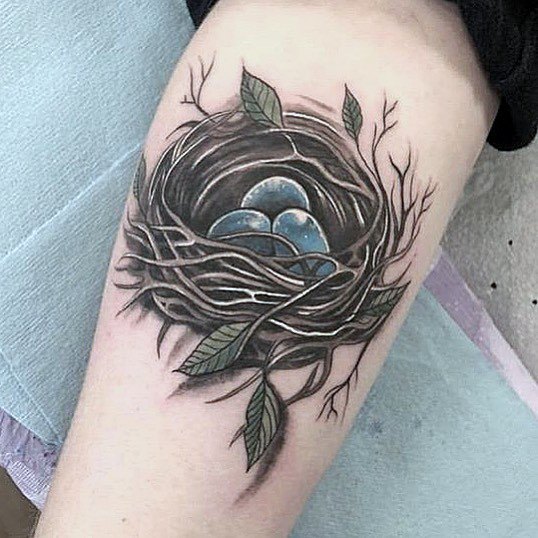
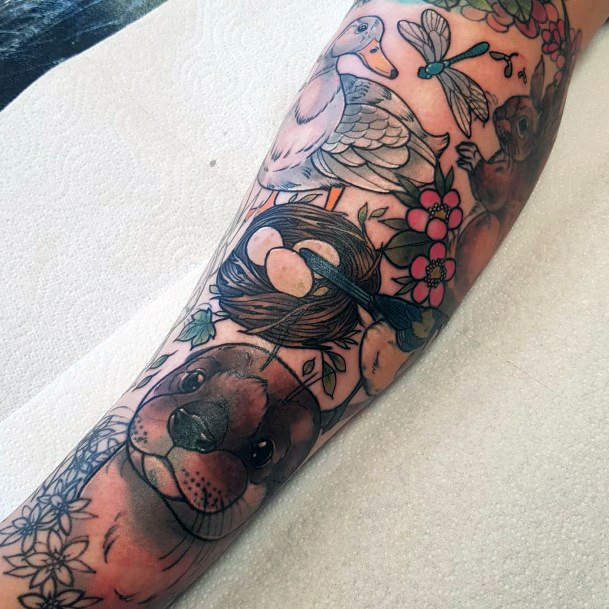
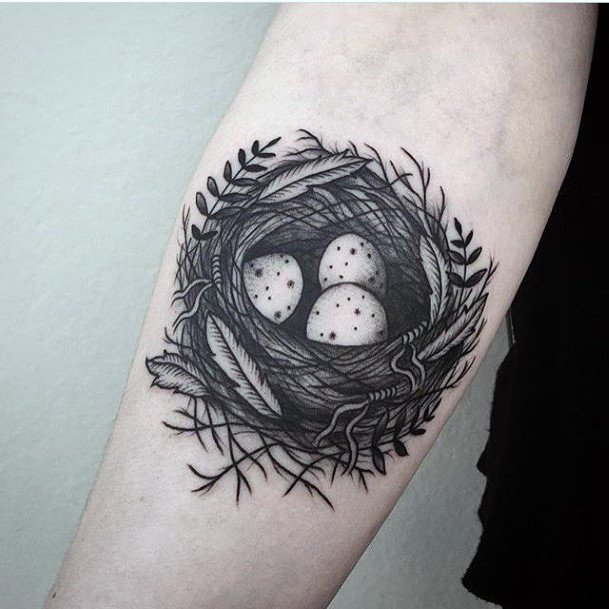
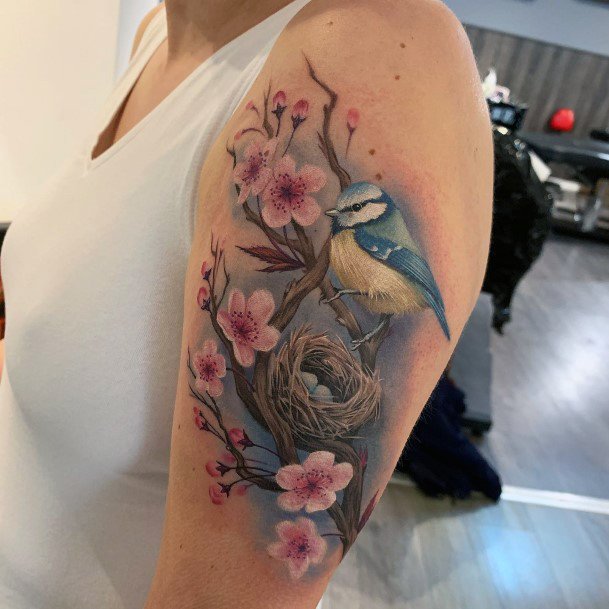
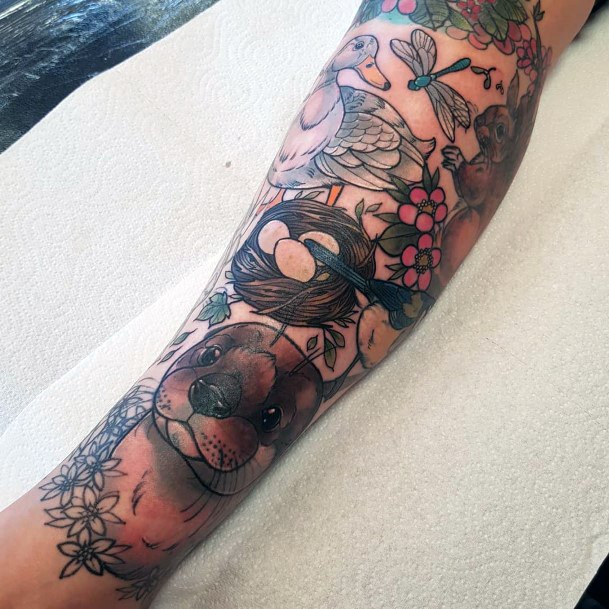
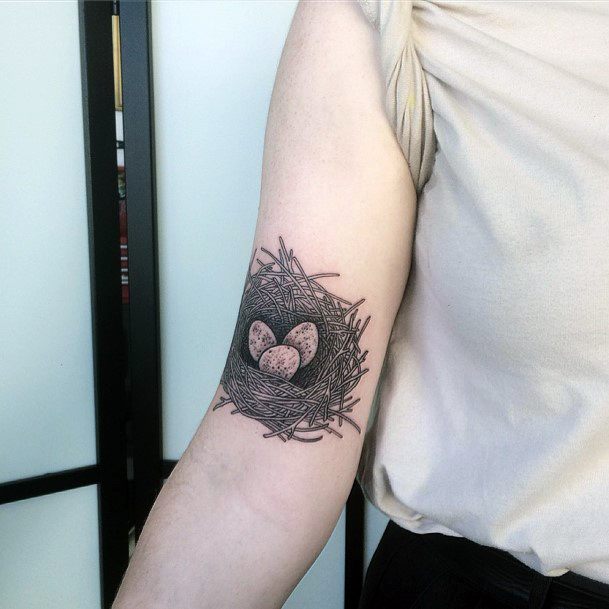

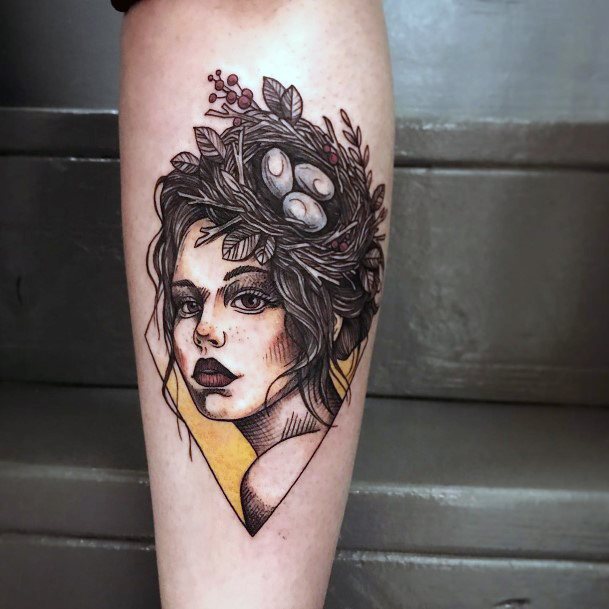
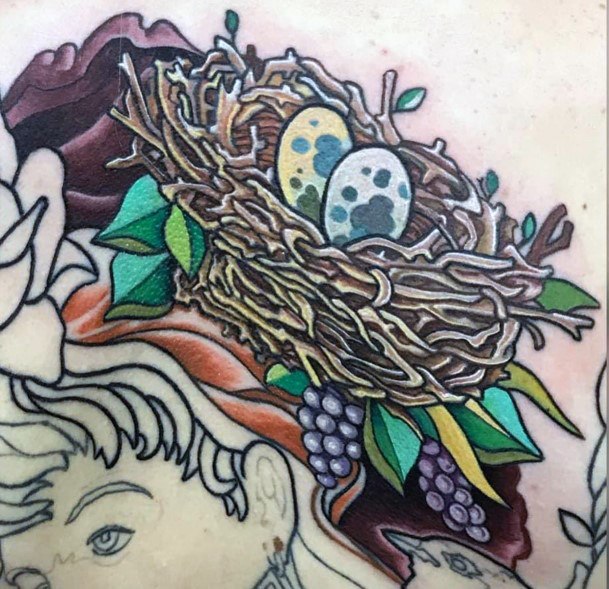

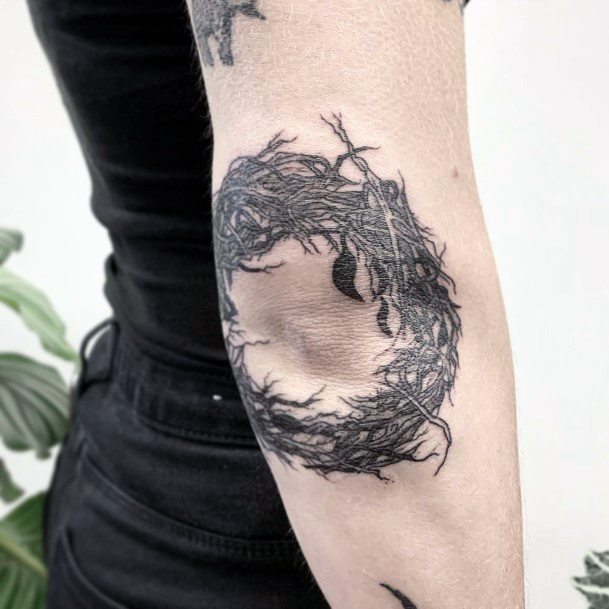
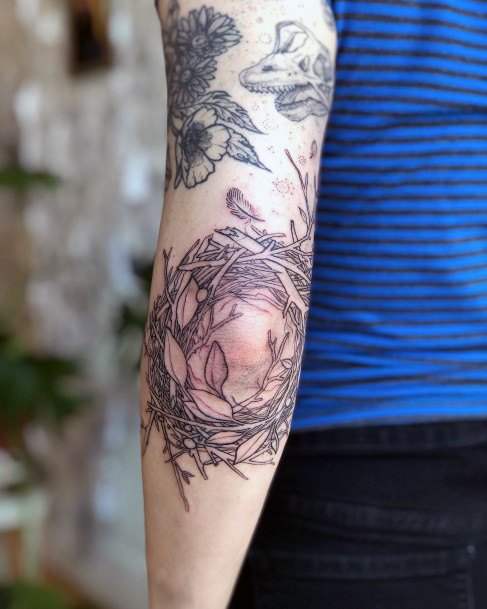
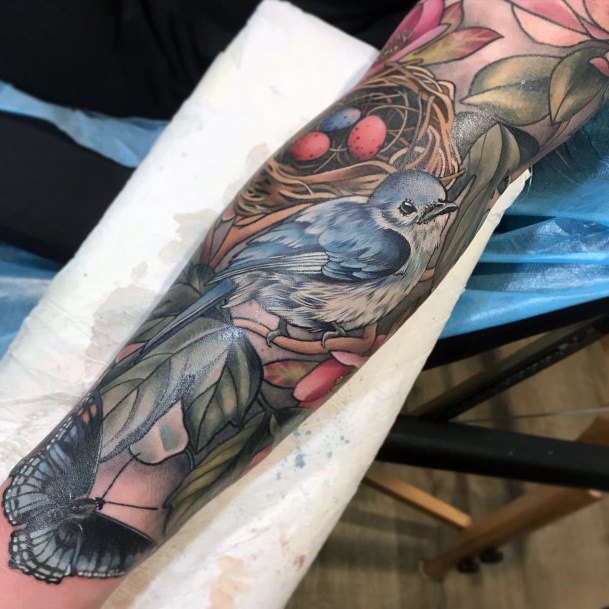
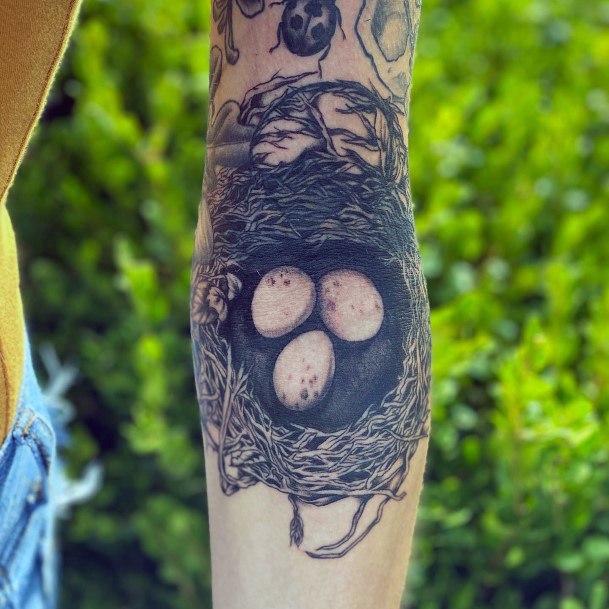

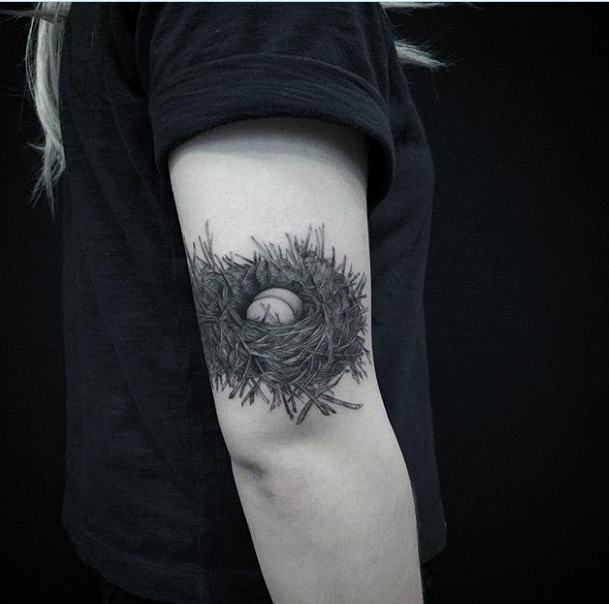
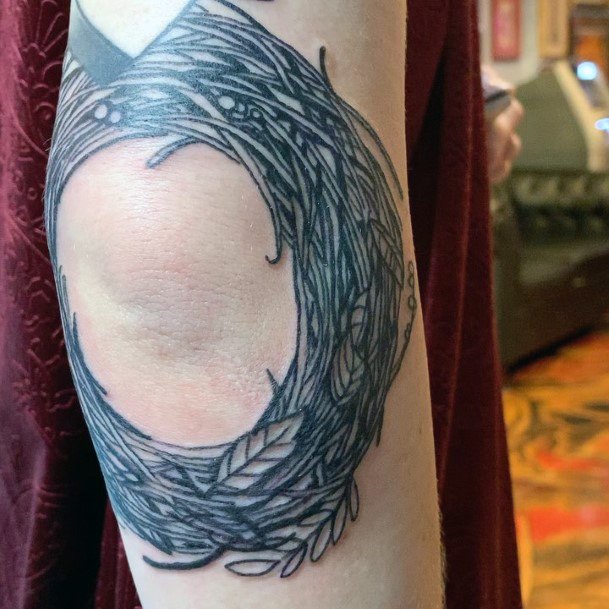
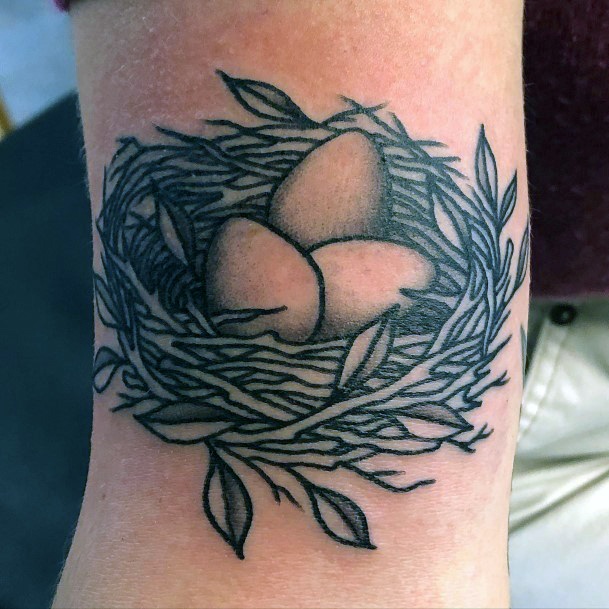
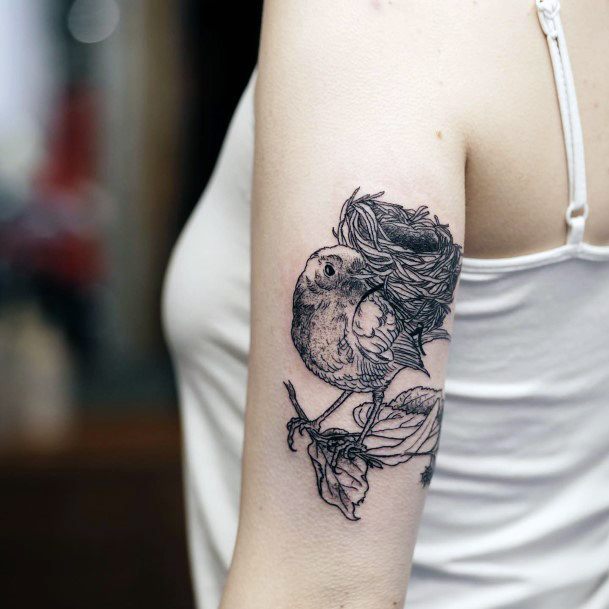

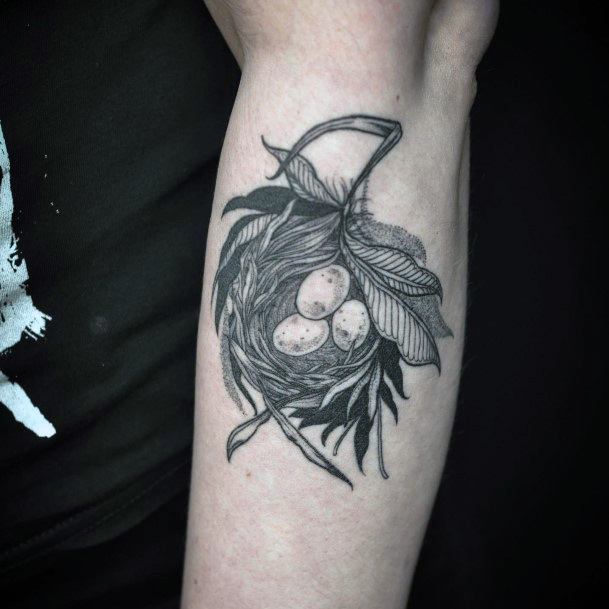

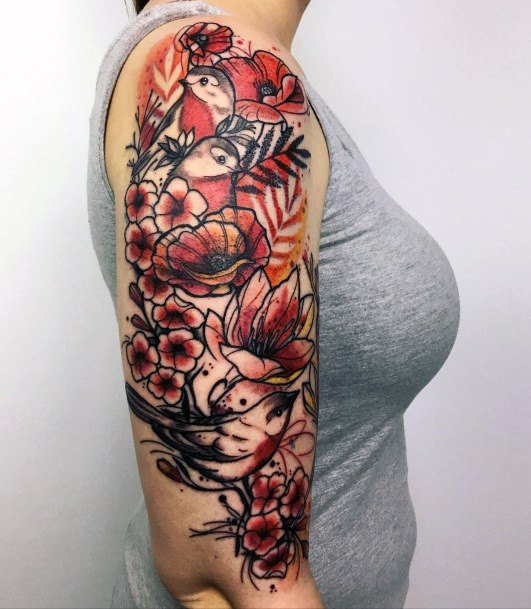
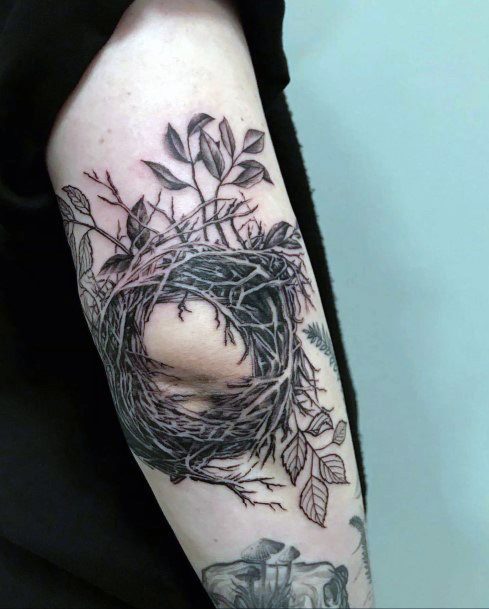


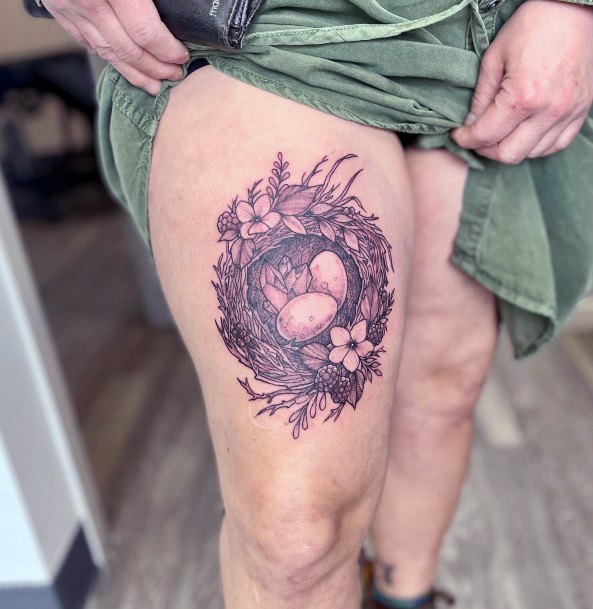
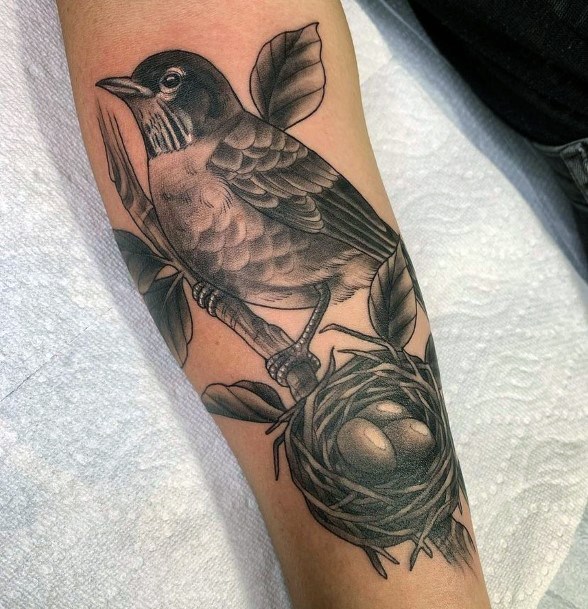

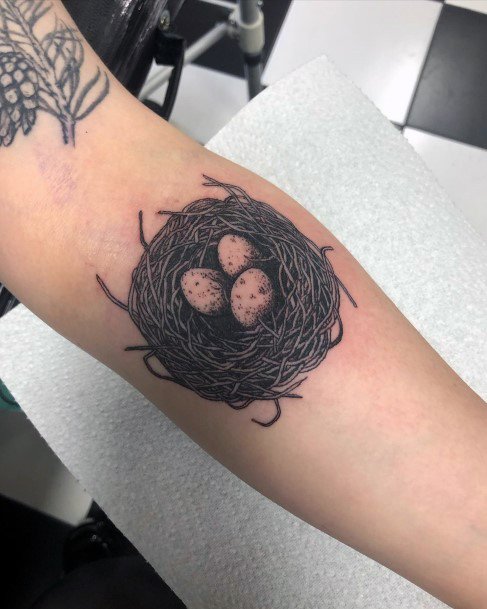
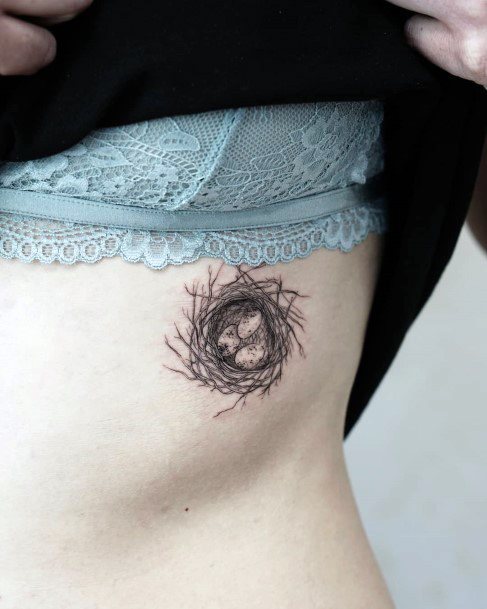


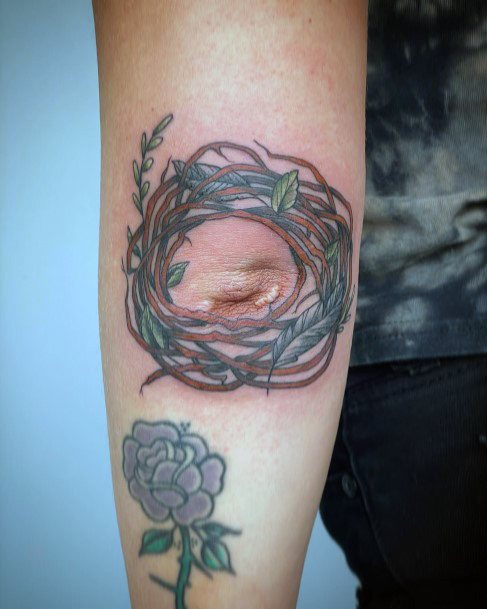
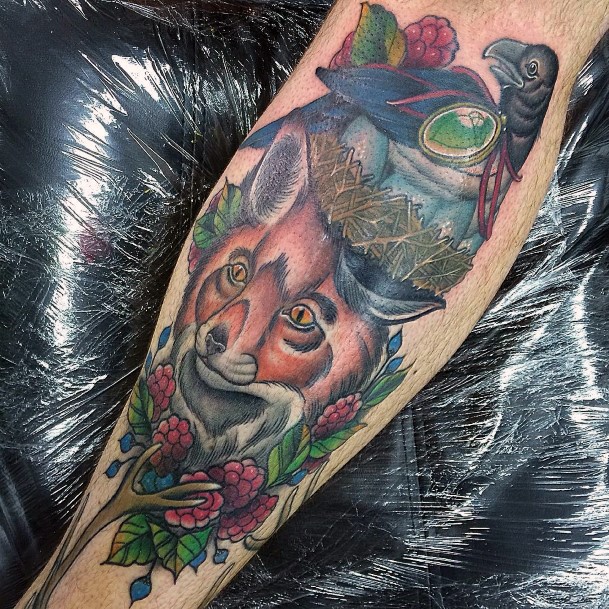
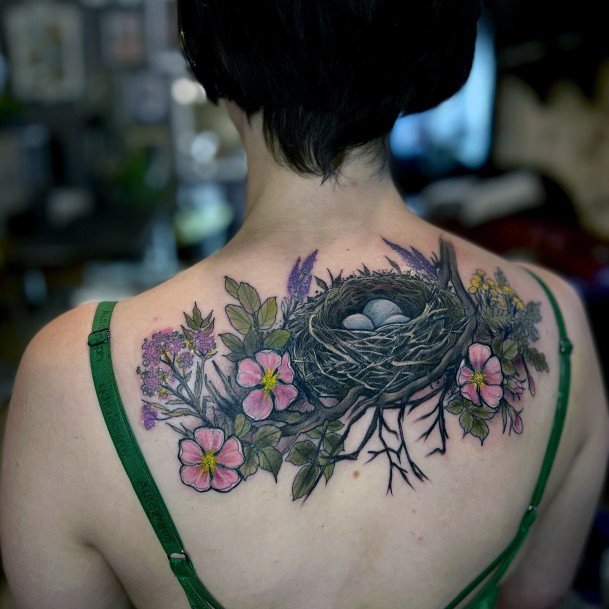
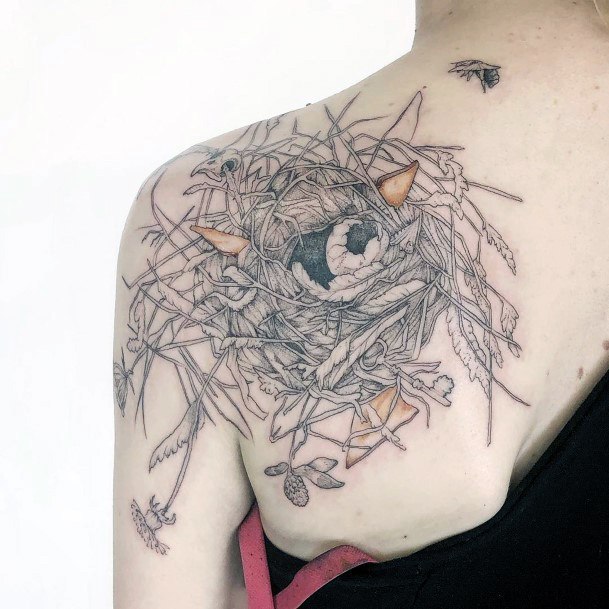
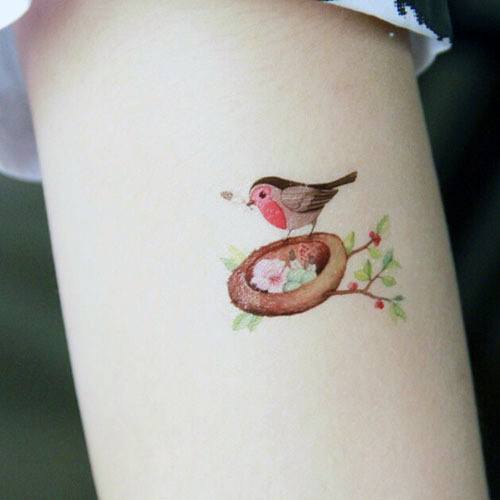
Bird’s nest tattoo meanings and symbolism:
What do bird’s nest themed designs mean and symbolize?: Birds, particularly nesting birds, have been used as symbols in various cultures for centuries. The symbolism of birds’ nests has been associated with various ideas and beliefs throughout history, from the concept of a safe haven or home to the idea of fertility and abundance. In this essay, we will explore the symbolism of birds’ nests and how it has been interpreted in different contexts, including religious, folkloric and literary traditions.
In many cultures, birds’ nests have been used as symbols of protection and security. This is likely due to the fact that a bird’s nest offers a safe place for its young to grow and thrive. The concept of safety is deeply rooted in the idea of family and home, which can be seen in many examples of ancient literature. In the Old Testament book of Psalms, God is described as being “like a bird that makes her nest near your altars, Lord Almighty” (Psalm 84:3 NIV). Here, God is depicted as providing protection to his people, just as a mother bird would protect her young in her nest. In a similar vein, some Native American tribes viewed birds’ nests as symbols of good luck and safety from harm.
Birds’ nests also have strong associations with fertility and abundance. This connection likely stems from the fact that nesting birds serve as living examples of life’s cycle of creation and renewal. Ancient peoples were likely awed by the process of watching a pair of birds build their nest together, lay eggs, nurture their young until they were strong enough to fly away on their own. This idea has been echoed in numerous pieces of religious literature throughout history. In Hinduism, birds are seen as symbols of fertility and rebirth due to their ability to reproduce rapidly and have multiple generations in one season. The Book of Proverbs states “Go to the ant you sluggard; consider its ways and be wise! It has no commander, no overseer or ruler, yet it stores its provisions in summer and gathers its food at harvest” (Proverbs 6:6-8 NIV). Here, the ant serves as an example of industry and resourcefulness which can be applied to human life—just like nesting birds store up food for their young during good times so they can survive during bad times. This concept has also been echoed in modern literature over the years. For example, in JK Rowling’s Harry Potter series we see how Harry’s parents prepare for his future by leaving him a large inheritance before their deaths—much like how parents provide for their children by building nests filled with food before they fly away themselves.
In addition to religious texts and literature, folklore also uses birds’ nests as symbols. For instance, there is an old superstition that says if someone finds a bird’s nest with three eggs inside it then they will experience great good luck. Another example is a popular superstition found in some parts of Europe which states that if you find an abandoned bird’s nest then you should fill it with gold coins in order to bring wealth into your life. Finally, there is an old fairy tale about two princes who were turned into swans by an evil witch but eventually managed to escape by weaving themselves a nest out of reeds—a testament to the strength found within a communal effort when faced with difficult circumstances.
The symbolism surrounding birds’ nests is varied but often connected to concepts such as protection, security, fertility and abundance. This symbolism has been used throughout history across different religious texts, folk stories and literature to convey messages about life’s cycle and its importance in maintaining balance between good fortune and bad luck. Although these symbolic connections may vary depending on context or culture, they are all tied together by the common theme of using nature—in this case nesting birds—to illustrate important values that can be applied to everyday life situations.

